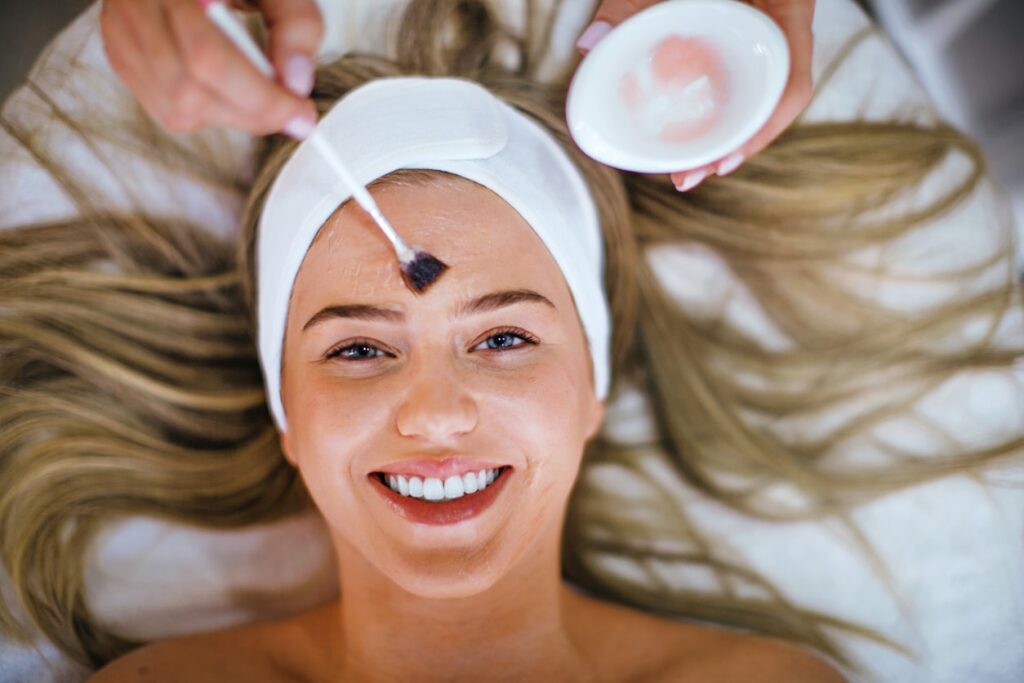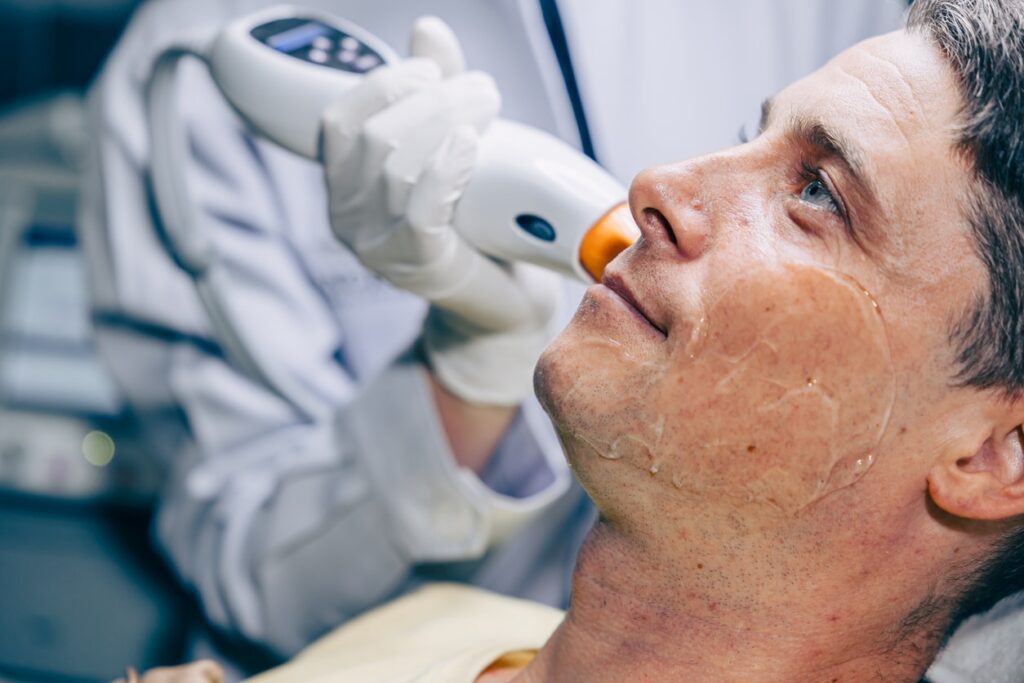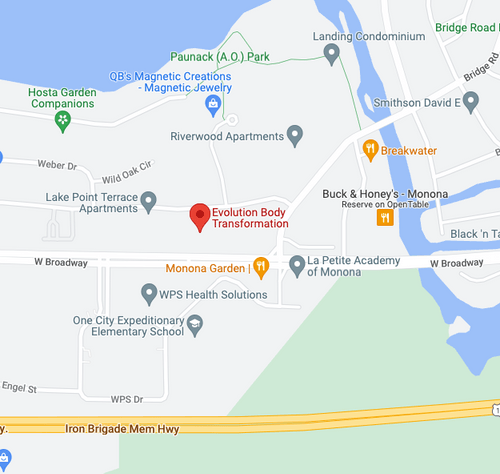
Are you curious about chemical peels in Madison, WI? Find out the types, costs, and what you can expect from each treatment. Get the details you need to choose the right peel for your skin.
Key Takeaways
- Chemical peels in Madison, WI, are categorized into three types: superficial, medium, and deep, each tailored for specific skin concerns and recovery times.
- The effectiveness of chemical peels extends to treating fine lines, wrinkles, skin discoloration, and scarring, with options like TCA and Vitalize Peels addressing multiple issues.
- Proper preparation and aftercare, including pre-treatment consultations, skincare routines, and post-peel protection from UV damage, are essential for successful outcomes.

Types of Chemical Peels Available in Madison, WI
Chemical peels improve skin appearance by causing layers to peel off, revealing fresh, new skin beneath. The primary types of chemical peels available in Madison, WI, include superficial, medium, and deep peels. Each type caters to different skin needs and conditions, offering varying exfoliation levels and results.
Superficial peels are light peels suitable for all skin types. They provide gentle exfoliation that improves skin texture and tone over time. Medium peels delve deeper, addressing more persistent skin issues like dyschromia and superficial scars.
Finally, deep chemical peels offer significant skin resurfacing, tackling deep wrinkles and severe photoaging but requiring a longer recovery.
Superficial Peels
Superficial peels, also known as light chemical peels, are a popular choice for those looking to exfoliate the outermost layer of the skin gently. These peels often utilize chemical solutions such as glycolic acid or lactic acid, which help improve uneven skin tone and rough skin. Salicylic acid chemical peels are another commonly used solution in these treatments.
The application process is straightforward: a chemical solution is applied using a cotton ball, gauze, or brush, and it either gets removed after a few minutes or neutralized with another solution. Superficial peels can be safely used on darker skin tones and are generally suitable for all skin types, offering benefits like improved skin texture and tone and reduced fine wrinkles.
Medium-Depth Peels
Medium-depth peels go further in exfoliation, using trichloroacetic acid (TCA) or glycolic acid to treat more significant skin issues. These peels effectively address dyschromia, multiple solar keratoses, superficial scars, and pigmentary disorders. The result is noticeably smoother skin, although patients may experience stinging or burning sensations during the procedure and redness that can persist for several months.
The GLO peel, an in-office medium-level peel, focuses on refining skin texture by addressing pores, fine lines, and hyperpigmentation. The Rejuvenize peel is another medium-depth option, suitable for moderate to severe skin conditions and effective for various skin types.
Deep Chemical Peels
Deep chemical peels utilize carbolic acid (phenol) to penetrate the skin deeply, dramatically improving skin appearance. This chemical peeling is used for significant skin resurfacing, addressing severe photoaging, deep wrinkles, and scars. Given the intensity of the treatment, a topical anesthetic may be used, and patients are often sedated with vital signs monitored throughout the procedure for larger areas.
The results of a deep peel are transformative but have a high risk of prolonged or permanent pigmentary changes, especially for individuals with darker skin types. Medium-depth TCA peels can also be classified as deep peels depending on the concentration used, with those above 50% falling into this category.
Fine Lines and Wrinkles
Chemical peels are formidable allies when battling the signs of aging. The Vitalize Peel, for instance, is specifically designed to diminish the appearance of fine lines and wrinkles. This peel targets wrinkles and improves skin texture issues related to acne scarring and hyperpigmentation, providing a comprehensive solution for aging skin.
The Rejuvenize Peel offers a robust treatment option for more pronounced concerns. It smooths fine lines and wrinkles, ideal for individuals with moderate to severe skin conditions. Chemical peels significantly enhance skin tone and texture, making you look more youthful by addressing surface and deeper skin layers.
Skin Discoloration and Scarring

Chemical peels are also highly effective in treating skin discoloration and scarring. The TCA Peel is a standout in this category. It clears away dead skin cells and reveals the newer, smoother skin layers beneath. This process helps reduce the appearance of skin discolorations, scarring, and even wrinkles, making it a versatile treatment option.
Sun exposure, acne scars, and other skin conditions can lead to uneven skin tone and texture. Chemical peels effectively address these issues by removing damaged skin cells and promoting the growth of new skin. They also help lighten dark patches and scaly areas, giving your skin a more uniform and radiant appearance.
Costs of Chemical Peels in Madison, WI
The cost of chemical peels in Madison, WI, varies significantly based on the type of peel and the clinic’s reputation. Superficial peels are generally more affordable, while medium and deep peels are more expensive due to their complexity and the level of expertise required. Factors such as the practitioner’s experience and the clinic’s location also influence the overall cost.
Additional services or treatments can further affect the final price. When considering a chemical peel, weighing the costs against the potential benefits is essential to ensure you choose a treatment that fits your budget and skincare needs.
Risks and Side Effects of Chemical Peels
Like any cosmetic procedure, chemical peels come with their own set of risks and side effects. Patients with darker skin tones are at a higher risk of post-inflammatory hyperpigmentation after a superficial peel. Additionally, the skin may temporarily become lighter or darker, and there’s a risk of scarring, particularly on the lower face.
Infections, including outbreaks of the herpes virus, are another potential complication. Deep chemical peels pose serious health risks, such as potential damage to internal organs and permanent loss of the ability to tan. Therefore, discussing past medical conditions and current medications is crucial to avoid complications.
Preparing for a Chemical Peel in Madison, WI
Proper preparation ensures a successful chemical peel. It begins with a thorough evaluation by a dermatologist, where your medical history and any medications that may interfere with the treatment are discussed. This consultation helps identify any potential issues that could arise during the procedure.
Preparation also involves adopting a pre-treatment skincare routine and making necessary lifestyle adjustments. This includes avoiding sun exposure and smoking to minimize the risk of complications and enhance the treatment’s effectiveness.
Medical History and Consultation
Your medical history is thoroughly reviewed during the consultation to determine any potential contraindications to the procedure. This step is crucial to ensuring the safety and efficacy of the treatment.
Pre-Treatment Skincare Routine
Establishing a pre-treatment skincare routine is essential for optimal results from a chemical peel. Patients may be advised to use topical retinoids before the treatment to enhance skin smoothness and promote healing. These retinoids create a smooth stratum corneum, allowing for even peel penetration and faster recovery.
Incorporating antioxidants like vitamin C can enhance the skin’s resilience and brightness post-peel. Adhering to this routine ensures that your skin is in the best possible condition for the procedure, maximizing the benefits of the chemical peel.
Avoiding Sun Exposure and Smoking
Limiting sun exposure before a chemical peel is critical to prevent irregular pigmentation complications post-treatment. Direct sun exposure can lead to issues like irregular pigmentation, which may be more pronounced after the treatment.
Smoking can impair healing and increase the risk of complications, so it’s essential to avoid it before the procedure. Taking these precautions can enhance your skin’s ability to heal and achieve the best possible results from your chemical peel.
Post-Peel Care and Recovery
After undergoing a chemical peel, proper care, and recovery are crucial for achieving the best results.
Symptoms such as:
- redness
- tightness
- irritation
- swelling
are common, with recovery times varying based on the type of peel.
Applying protective ointments like petroleum jelly can help soothe new skin and manage increased sensitivity.
High SPF sunscreen (at least SPF 40) protects the new skin from UV damage and prevents premature aging. Avoid swimming for at least 24 hours post-treatment to enhance healing and minimize complication risks.
Immediate Aftercare
For the first two days after a chemical peel, it is recommended that the treated area be washed with only warm water. Makeup and other cosmetic products should not be used until approved by a doctor. Direct sun exposure and smoking should be avoided to prevent complications.
Monitoring for signs of infection is crucial, and any excessive redness or swelling should be promptly reported to a dermatologist. Severe discomfort or swelling may require immediate medical attention.
Long-Term Care
Long-term care after a chemical peel involves protecting the skin from sun exposure, using suitable moisturizers, and staying hydrated to maintain the results. Immediately after the peel, gently cleansing the skin and applying a soothing moisturizer can help minimize irritation.
If complications such as excessive redness, severe swelling, or signs of infection occur, it’s important to seek medical attention promptly.
When to Seek Medical Attention
Complications after chemical peels may include temporary or permanent changes in skin color, cold sores, and scarring. Proper care and immediate addressing of any signs of adverse reactions are essential for effective healing.
Choosing the Right Clinic in Madison, WI
Choosing the right clinic for your chemical peel is crucial to ensure the safety and effectiveness of the treatment. Look for clinics with double board-certified practitioners, as this certification enhances trust in the quality of care. Patient reviews highlighting professionalism and positive outcomes also indicate a reliable clinic.
Evolution Body Transformation in Monona, WI, is an excellent choice for chemical peels.
Before-and-after photos can provide visual proof of a clinic’s effectiveness in performing chemical peels. Researching and selecting the right clinic will help you achieve the best possible results from your chemical peel.
Summary
Chemical peels in Madison, WI, offer a versatile and effective solution for improving various skin conditions, from fine lines and wrinkles to acne scars and discoloration. By understanding the different types of chemical peels—superficial, medium, and deep—you can decide which treatment best suits your needs. Each type of peel offers unique benefits, whether you’re looking for a quick refresh or a more intensive treatment with significant results.
Preparing for a chemical peel involves careful planning, including a thorough consultation, adopting a pre-treatment skincare routine, and avoiding sun exposure and smoking. Post-peel care is equally important to ensure proper healing and maintain the treatment’s results. By choosing a reputable clinic and following the recommended care guidelines, you can achieve smoother, more youthful-looking skin and enjoy the many benefits of chemical peels.

Frequently Asked Questions
What is the difference between superficial, medium, and deep chemical peels?
The main difference lies in their depth of skin penetration and treatment intensity; superficial peels address the outer layer, medium peels target deeper skin concerns, and deep peels offer significant resurfacing for severe conditions. Choosing the appropriate peel depends on the specific skin issues being addressed.
What are the costs associated with chemical peels in Madison, WI?
The costs of chemical peels in Madison, WI, vary depending on the type of peel and the clinic’s reputation. Subtle peels are more affordable than medium and deep peels, which are pricier due to their complexity and required expertise.
What are the risks and side effects of chemical peels?
Chemical peels carry risks such as post-inflammatory hyperpigmentation, infections, scarring, and a potential risk of internal organ damage from deeper peels. To mitigate these risks, it is essential to consult your dermatologist thoroughly about your medical history and medications.
How should I prepare for a chemical peel?
Selecting products based on the season ensures the best care for your skin. Loved bestsellers such as Revision Skincare Intellishade and iS Clinical PerfectTint SPF 40 are perfect examples of products that offer both hydration and sun protection. In winter, adding products like the iS CLINICAL SHEALD Recovery Balm can help keep your skin resilient by locking in moisture.
What post-peel care is necessary for optimal recovery?
For optimal recovery after a peel, it is essential to manage symptoms such as redness and irritation, apply high-SPF sunscreen, and avoid swimming for at least 24 hours. Additionally, long-term care should include protecting the skin from sun exposure and using appropriate moisturizers to maintain results.






